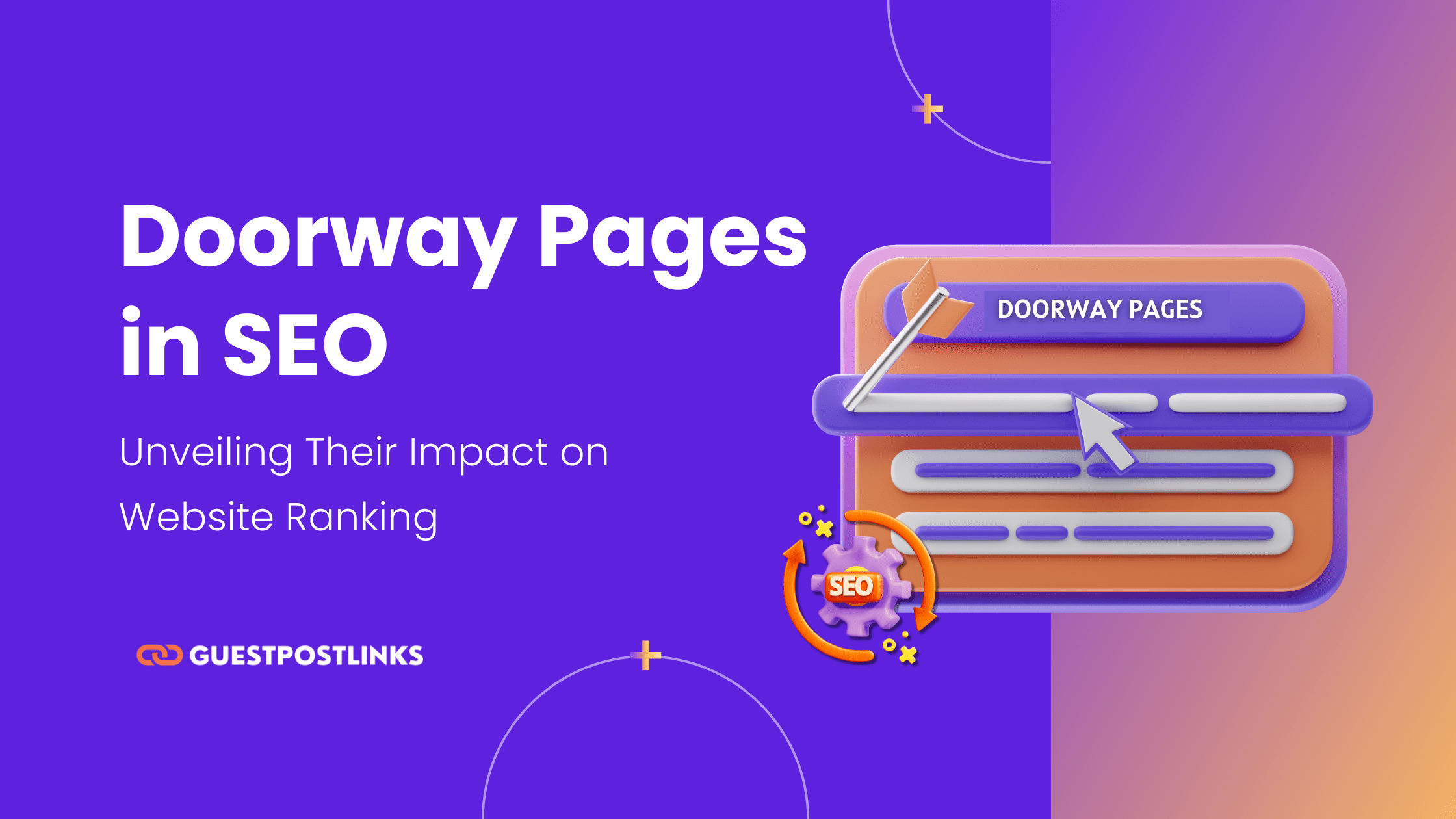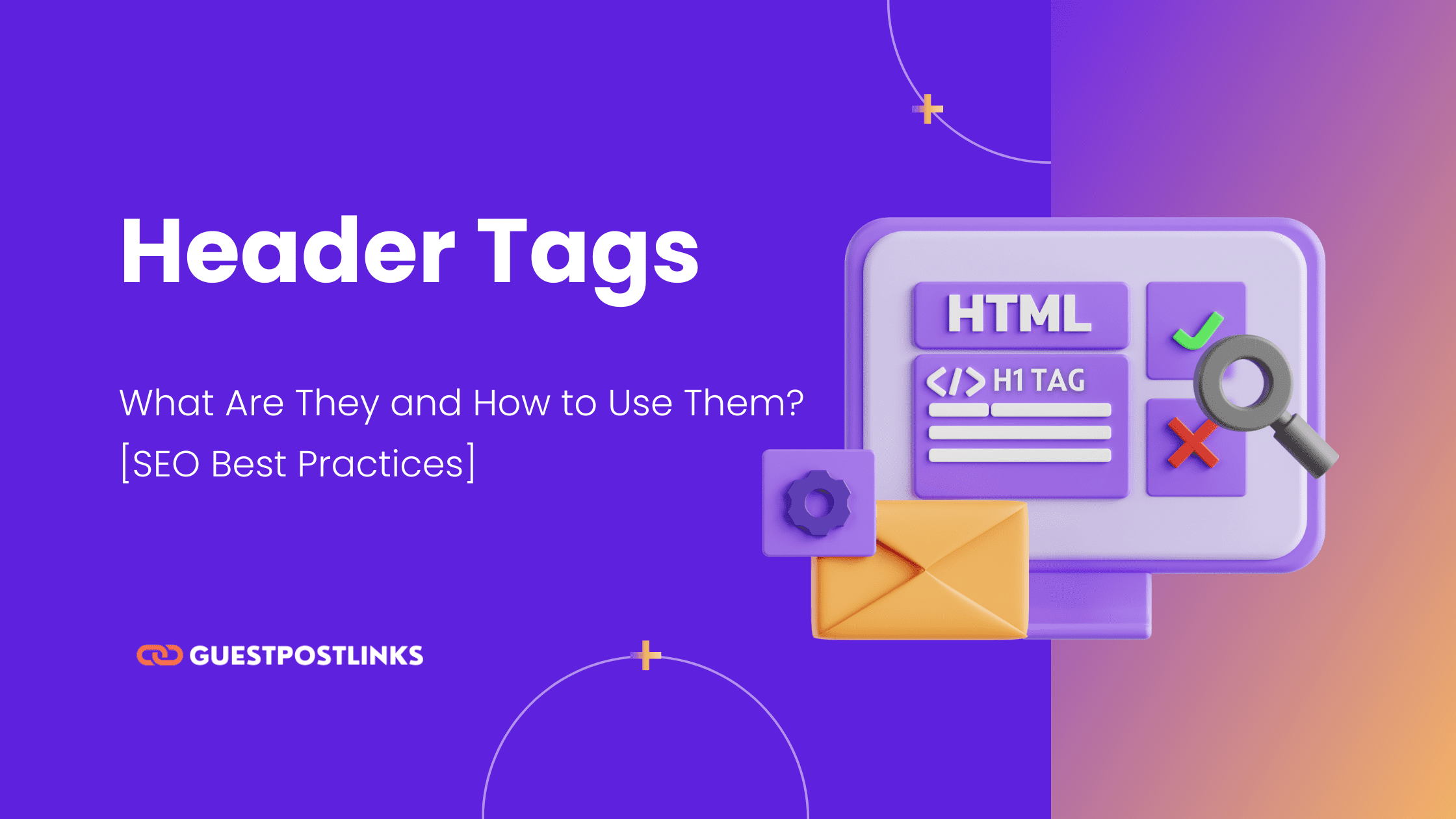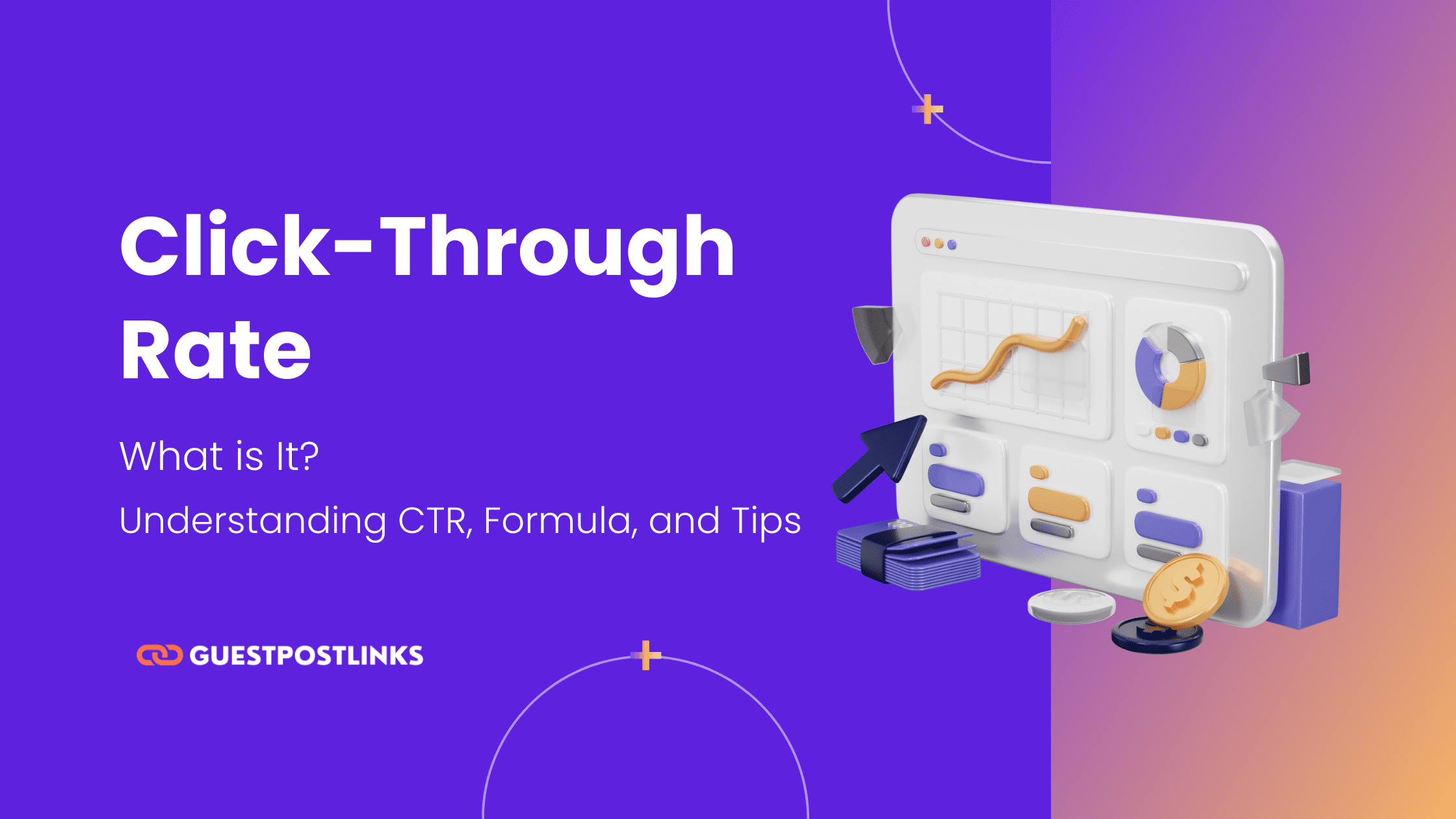Many website owners are tempted by Black Hat SEO unethical shortcuts that promise quick rankings. The problem? These tactics almost always backfire. Sites relying on keyword stuffing, link schemes, or cloaking risk severe penalties, including loss of visibility, de-indexing, and long-term damage to their brand reputation.
And the stakes have never been higher. Google’s AI-driven spam detection systems, like SpamBrain, have become more advanced than ever, capable of catching manipulative SEO patterns at scale. What used to slip through a decade ago is now identified in seconds. When a penalty hits, it doesn’t just wipe out traffic it can also cripple revenue streams and erode user trust overnight.
That’s why it’s critical to understand what Black Hat SEO is, which tactics to avoid, and what safer alternatives exist. In this guide, we’ll break down:
- A clear definition of Black Hat SEO
- The 13 most common tactics you must avoid in 2025
- How search engines detect violations using AI and manual actions
- A step-by-step recovery plan if your site is penalized
- Proven White Hat SEO strategies for long-term growth
This article is designed for readers who want to prevent SEO mistakes, understand how to recover from penalties, and invest in sustainable growth strategies.
What Is Black Hat SEO?
Black Hat SEO refers to tactics that violate search engine guidelines such as cloaking, link schemes, and keyword stuffing to manipulate rankings. These shortcuts can trigger manual actions or algorithmic demotions, causing traffic loss, de-indexing, and long-term reputational damage.
Black Hat SEO is the opposite of White Hat SEO, which focuses on creating high-quality, user-first content. Instead, black hat practices exploit loopholes in search algorithms to gain short-term visibility.
While these tactics may provide temporary ranking boosts, they directly conflict with Google’s Helpful Content System and spam policies. As a result, Google’s evolving algorithms particularly SpamBrain (AI-based spam detection) are designed to identify and neutralize such manipulative practices quickly. Ultimately, engaging in Black Hat SEO not only puts your site’s rankings at risk but also undermines trust, credibility, and long-term growth key pillars of Google’s E-E-A-T framework.
Why You Should Avoid Black Hat SEO
Black Hat SEO may seem like a shortcut to quick rankings, but the consequences far outweigh the temporary benefits. Google has made it clear through its policies and algorithm updates that manipulative tactics are not tolerated.
Manual Actions vs. Algorithmic Demotions
There are two primary ways Google penalizes websites engaging in Black Hat SEO:
- Manual Actions – A human reviewer from Google flags your site for guideline violations. This often results in sudden ranking drops or even complete removal from search results until the issues are fixed.
- Algorithmic Demotions – Google’s AI-driven spam systems, like SpamBrain, and legacy updates such as Penguin, automatically detect unnatural behavior such as link schemes or cloaking. These algorithmic filters quietly suppress rankings without warning, making recovery more difficult.
Loss of Rankings, Traffic, and Conversions
Once a penalty is applied, your website can experience a sharp decline in organic visibility, which leads to fewer visitors, lost conversions, and decreased revenue. Recovery is rarely immediate it can take weeks or months of corrective action to regain lost ground.
Brand and User Trust Damage
SEO is not only about search engines; it’s about users. If visitors encounter deceptive practices like clickbait, cloaked content, or irrelevant landing pages they lose trust in your brand. Negative experiences often translate into lower engagement, fewer backlinks, and poor word-of-mouth reputation.
High Recovery Costs
Fixing the consequences of Black Hat SEO can be more expensive and time-consuming than doing things the right way from the start. Businesses must:
- Audit and remove harmful backlinks
- Rewrite low-quality or manipulative content
- File reconsideration requests with Google
- Reinvest in White Hat SEO to rebuild trust and rankings
The opportunity cost of lost traffic and revenue during recovery can be devastating especially for businesses that rely heavily on search visibility.
13 Common Black Hat SEO Tactics (2025 Update)
While Black Hat SEO may evolve over time, the underlying intent remains the same: to manipulate search engines instead of serving users. Below are the 13 most common tactics in 2025 each with a quick explanation and a safer White Hat alternative.
1) Keyword Stuffing
What it is: Keyword stuffing is the practice of excessively repeating a target keyword (or variations) in titles, meta tags, and on-page text in an unnatural way.
Why it’s harmful: Instead of helping users, it creates spammy, unreadable content. Google’s Helpful Content system and SpamBrain now detect this easily.
Penalty Risk: High Pages are likely to get algorithmically demoted for irrelevance.
✅ Safe Alternative: Use semantic variations and long-tail keywords naturally within content. Focus on topic coverage, not raw keyword count.
2) Hidden/Invisible Text & Links
What it is: Adding text or links that users can’t see (e.g., white text on a white background, CSS hidden layers, or tiny font sizes).
Why it’s harmful: It deceives search engines by injecting extra keywords or backlinks without offering value to users.
Penalty Risk: High – Easily flagged by crawlers as manipulative.
✅ Safe Alternative: Ensure all SEO-relevant content is visible and accessible to users. Use legitimate internal linking with descriptive anchor text.
3) Cloaking (User-Agent or IP-Based)
What it is: Serving one version of content to search engines and another to human visitors.
Why it’s harmful: This misleads crawlers into ranking content users never see, violating Google’s Webmaster Guidelines.
Penalty Risk: Severe – Often leads to manual actions and full de-indexing.
✅ Safe Alternative: Serve the same content to all users and crawlers, but optimize with structured data for clarity.
4) Doorway Pages
What it is: Creating low-quality, keyword-targeted pages designed solely to funnel traffic to a single destination.
Why it’s harmful: Users land on thin, duplicate, or irrelevant pages, creating a poor experience.
Penalty Risk: Moderate to Severe – May trigger manual actions for manipulative intent.
✅ Safe Alternative: Build comprehensive landing pages that address user intent holistically, rather than fragmenting topics into shallow pages.
Also Read: Doorway Pages SEO Guide 2025: Definition, Risks & Recovery
5) Duplicate/Spun Content (incl. AI-Spun)
What it is: Republishing identical or slightly “spun” versions of content using automation tools or AI.
Why it’s harmful: Offers no unique value, violates originality standards, and can spread misinformation.
Penalty Risk: High – Google’s systems down-rank duplicated or auto-generated fluff.
✅ Safe Alternative: Write original, well-researched articles that demonstrate first-hand expertise and add unique insights.
6) Scraped Content
What it is: Copying entire articles, product descriptions, or blog posts from other sites without adding anything new.
Why it’s harmful: Provides no added value and violates copyright and ethical standards.
Penalty Risk: Very High – Pages can be removed from Google’s index.
✅ Safe Alternative: If referencing sources, always cite properly and add expert commentary, case studies, or unique visuals.
7) Sneaky Redirects (JS/Meta Refresh Hijacks)
What it is: Redirecting users to pages different from the one shown to search engines, often to irrelevant or spammy sites.
Why it’s harmful: Misleads users, destroys trust, and signals manipulation.
Penalty Risk: High – May lead to manual actions and de-indexing.
✅ Safe Alternative: Use 301 redirects responsibly during rebrands, migrations, or genuine content restructuring.
8) Structured Data (Schema) Spam
What it is: Marking up irrelevant or fake information with schema (e.g., fake reviews, misleading star ratings).
Why it’s harmful: Misleads Google into displaying false rich snippets.
Penalty Risk: Moderate – Schema abuse results in loss of eligibility for rich results.
✅ Safe Alternative: Use accurate, verified schema markup only for the content that exists on the page.
9) Link Schemes (Buying/Selling Links That Pass PageRank)
What it is: Paying for backlinks or trading links purely to manipulate PageRank.
Why it’s harmful: Undermines the link graph and creates unnatural backlink profiles.
Penalty Risk: Severe – Google’s Link Spam Update neutralizes paid links; offenders risk manual actions.
✅ Safe Alternative: Earn backlinks naturally with PR campaigns, outreach, and high-value content assets (e.g., studies, guides).
10) Private Blog Networks (PBNs)
What it is: Using expired domains or low-quality sites to artificially create backlinks.
Why it’s harmful: Creates unnatural link authority that collapses once discovered.
Penalty Risk: Severe – Networks are often mass-penalized, impacting all linked sites.
✅ Safe Alternative: Invest in genuine guest posting, partnerships, and niche-relevant digital PR.
11) Automated Link Building/Link Farms
What it is: Using bots or bulk services to generate hundreds of irrelevant backlinks.
Why it’s harmful: Creates spammy backlink profiles with no relevance or editorial oversight.
Penalty Risk: High – Links are ignored or penalized, wasting resources.
✅ Safe Alternative: Focus on quality over quantity even a few editorially placed backlinks outperform hundreds of spam links.
12) Comment/Forum/Guestbook Spam
What it is: Dropping irrelevant links in blogs, forums, or guestbooks for backlinks.
Why it’s harmful: Creates poor user experiences, clogs communities, and rarely passes link equity anymore.
Penalty Risk: Low-to-Moderate – Often just ignored, but can harm brand reputation.
✅ Safe Alternative: Engage authentically in forums/communities with helpful, value-driven contributions, not link drops.
13) CTR Manipulation & Bot Traffic (Automated Queries)
What it is: Using bots or click farms to artificially inflate CTR (click-through rate) on search results.
Why it’s harmful: Attempts to trick Google into believing a page is more relevant than it is.
Penalty Risk: Moderate Google filters bot clicks; manipulation is ineffective long-term.
✅ Safe Alternative: Improve CTR naturally with compelling meta titles, emotional triggers, and schema that enhances SERP appearance.
Pro SEO Tip: Most Black Hat SEO tactics are designed for short-term wins but result in long-term losses. Instead, align with Google’s Helpful Content System and E-E-A-T principles for sustainable growth.
How Search Engines Detect Black Hat SEO
Google’s algorithms and human reviewers work together to identify and neutralize Black Hat SEO practices. Over the past decade, detection has become far more sophisticated, combining AI-driven systems, pattern analysis, and manual oversight.
AI/ML Spam Detection (SpamBrain & Pattern Analysis)
Google’s SpamBrain system, launched and continuously updated since 2018, now uses artificial intelligence and machine learning to identify spam patterns at scale.
- Detects link schemes, keyword stuffing, cloaking, and auto-generated content.
- Learns from billions of examples, improving with every iteration.
- Identifies patterns of abuse across networks of sites, rather than just single pages.
In 2025, SpamBrain is capable of real-time spam detection, reducing the lag between manipulative tactics being deployed and Google taking action.
Penguin Evolution: Unnatural Link Signals & Anchors
Originally launched in 2012, the Penguin algorithm was Google’s first major weapon against manipulative link building.
- Penguin 4.0 (2016) integrated into Google’s core algorithm, enabling real-time link spam evaluation.
- Focuses on detecting unnatural anchor text distributions, paid links, and PBN-style networks.
- Instead of penalizing entire sites, Penguin now devalues bad links, ensuring manipulative backlinks no longer pass PageRank.
This means that in 2025, buying or trading links is virtually useless Google’s systems ignore or neutralize them automatically.
Manual Reviews, Spam Reports & Webspam Team Actions
While algorithms handle most spam detection, Google also employs human reviewers for high-risk cases:
- Manual Actions: When a reviewer identifies violations, they apply manual penalties visible in Google Search Console.
- Spam Reports: Users and competitors can flag suspicious sites, prompting human review.
- Reconsideration Requests: Site owners must clean up violations and submit documentation before penalties are lifted.
Manual reviews ensure human oversight where algorithms may be too lenient or miss nuance.
Behavioral & SERP-Level Anomaly Detection
Google also monitors user signals and SERP patterns to detect manipulation:
- CTR (Click-Through Rate) anomalies – abnormal spikes may suggest bot-driven manipulation.
- Bounce rates and dwell time – poor engagement signals low-quality or deceptive content.
- Link velocity anomalies – sudden unnatural backlink growth patterns trigger link spam checks.
- SERP diversity monitoring – ensures results aren’t dominated by manipulative networks.
These signals help Google verify whether a page is genuinely valuable to users or artificially inflated.
How to Recover from a Black Hat SEO Penalty (Step-by-Step)
Recovering from a Black Hat SEO penalty requires methodical action, transparent communication with Google, and a long-term commitment to White Hat SEO. Follow these five steps to restore rankings and rebuild trust.
Step 1: Diagnose in Google Search Console
- Log into Google Search Console (GSC) to check for penalty notices.
- Look under “Manual Actions” to confirm if a reviewer applied a penalty.
- Check Performance reports for sudden drops in impressions or clicks (possible algorithmic demotions).
Tip: If there’s no manual action, assume an algorithmic filter (Penguin, SpamBrain) is suppressing your site.
Step 2: Audit Content & Links
- Perform a full site crawl with tools like Screaming Frog, Ahrefs, or SEMrush.
- Identify thin, duplicate, cloaked, or keyword-stuffed content.
- Export backlinks and classify them: Natural, Low-quality but not manipulative and Toxic (PBNs, paid links, link farms)
Step 3: Remediate
- Content: Rewrite or remove manipulative articles. Replace keyword-stuffed sections with user-first content.
- Links: Reach out to webmasters to remove toxic backlinks.
- Disavow: Use Google’s Disavow Tool as a last resort for links you cannot remove.
Step 4: Reconsideration Request
(For manual actions only):
- Document every step you’ve taken (before/after snapshots, link removal logs, disavow file).
- Write a transparent changelog outlining what was fixed and why it won’t happen again.
- Submit a Reconsideration Request in GSC with evidence and a clear recovery plan.
Step 5: Rebuild with White Hat SEO
After cleaning up, focus on long-term SEO resilience:
- Content Quality: Publish original, expert-driven articles reviewed for accuracy.
- Link Earning: Build authority through digital PR, guest contributions, and partnerships.
- User Experience: Improve Core Web Vitals (LCP, CLS, FID) and mobile usability.
- Trust Signals: Add author bios, references, and secure HTTPS to reinforce E-E-A-T.
White Hat SEO Alternatives (Safe & Sustainable)
Black Hat SEO may seem tempting for fast results, but it’s always a short-term gamble with long-term risks. The sustainable way forward is White Hat SEO strategies that comply with Google’s guidelines, focus on users first, and build trust and authority over time.
Here are the four pillars of a safe, sustainable SEO strategy in 2025:
1) People-First Content
Google’s Helpful Content System prioritizes material written to help users, not manipulate algorithms.
- Cover topics in depth, addressing user intent and related questions.
- Add original insights, case studies, and data rather than summarizing competitors.
- Have content reviewed by subject matter experts for credibility.
- Incorporate author bios and reviewer details to enhance E-E-A-T trust signals.
✅ Result: Better rankings, higher engagement, and lasting credibility.
2) Ethical Link Earning
Instead of buying links or using spammy networks, focus on earning editorial backlinks.
- Launch PR campaigns or newsworthy announcements.
- Create data-driven studies, infographics, or original research others want to cite.
- Build resource pages and guides that naturally attract references.
- Collaborate with niche-relevant publications and industry experts.
✅ Result: Links that are future-proof, algorithm-resistant, and authority-building.
3) Technical Excellence
Even the best content won’t rank without strong technical foundations.
- Optimize Core Web Vitals (LCP, FID, CLS) for speed and stability.
- Ensure mobile-first responsiveness across devices.
- Improve crawlability and site architecture so Google can index key pages.
- Fix broken links, duplicate content issues, and orphaned pages regularly.
✅ Result: Seamless user experiences and higher search visibility.
4) Smart AI Use (Research Support, Not Manipulation)
AI can be a valuable tool when used correctly but it must support expertise, not replace it.
- Use AI to research, outline, and brainstorm not to mass-generate low-quality articles.
- Always apply human editing, fact-checking, and expert input.
- Be transparent if AI assists in content production.
- Avoid manipulative automation like AI-spun content or fake reviews, which Google actively penalizes.
✅ Result: Scalable content workflows that stay compliant with Google’s standards.
Final Thoughts
Black Hat SEO might promise short-term gains, but the risks far outweigh the rewards. Tactics like cloaking, link schemes, and keyword stuffing can temporarily boost rankings, but they inevitably lead to penalties, traffic loss, and reputational damage.
In 2025, Google’s AI-driven systems like SpamBrain, combined with real-time updates to Penguin and human manual reviews, make it nearly impossible for manipulative practices to go undetected. Even if they work briefly, the long-term consequences are devastating lost rankings, wasted resources, and damaged brand trust.
The only sustainable path forward is White Hat SEO: creating people-first content, earning links ethically, and maintaining technical excellence. These strategies may take longer to show results, but they provide lasting visibility, trust, and growth.
Frequently Asked Questions (FAQ)
Examples of Black Hat SEO include keyword stuffing, cloaking, hidden text, doorway pages, duplicate or AI-spun content, link schemes, and private blog networks (PBNs). These tactics aim to manipulate search engine rankings but often result in penalties, traffic loss, and long-term damage to site trust and visibility.
Google penalizes Black Hat SEO through manual actions (applied by human reviewers) or algorithmic demotions from systems like Penguin and SpamBrain. Penalties reduce visibility, suppress rankings, or even remove pages from the index. Recovery requires removing violations, submitting reconsideration requests, and shifting to compliant, user-focused SEO strategies.
Yes, recovery is possible. You must diagnose the issue in Google Search Console, remove or fix the violations, and document the cleanup. Then submit a Reconsideration Request with evidence of corrective action. Recovery depends on transparency, thorough remediation, and a clear commitment to White Hat SEO going forward.
Recovery timelines vary. Algorithmic filters may take weeks to months to reflect changes once issues are fixed. Manual actions can take several weeks after a reconsideration request is submitted, depending on Google’s review. Ultimately, recovery speed depends on how quickly violations are removed and quality improvements are implemented.





 No publishers in the cart.
No publishers in the cart.